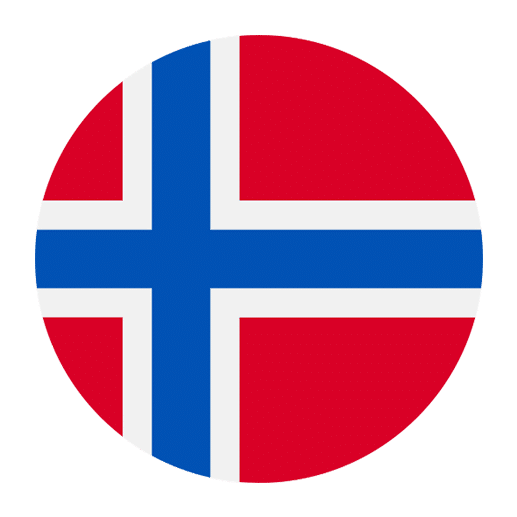Norwegian, one of the three primary Scandinavian languages, plays a pivotal role in the cultural fabric of Scandinavia. Comprising Norway, Sweden, and Denmark, Scandinavia is a region known for its rich history, stunning landscapes, and robust cultural heritage. Understanding the importance of the Norwegian language within this context provides valuable insights into the cultural identity and social dynamics of the region. This article delves into the significance of Norwegian in Scandinavian culture, exploring its historical roots, linguistic characteristics, and its influence on literature, music, and modern-day society.
Historical Roots and Evolution
Norwegian, a North Germanic language, shares its roots with other Scandinavian languages such as Swedish and Danish. The history of the Norwegian language can be traced back to the Viking Age (circa 800-1050 AD), during which Old Norse was the lingua franca of the region. The Viking Age saw the Norse people, including those from present-day Norway, expanding their territories and influencing various parts of Europe. Old Norse left a lasting impact on the languages spoken in these areas, contributing to the development of modern Scandinavian languages.
The evolution of Norwegian can be divided into three main periods: Old Norwegian (up to 1350), Middle Norwegian (1350-1550), and Modern Norwegian (from 1550 onwards). The Black Death in the mid-14th century led to significant changes in the language, as the population decline resulted in a shift from Old Norwegian to Middle Norwegian. The Danish rule over Norway from 1380 to 1814 further influenced the language, with Danish becoming the official written language.
It wasn’t until the 19th century that efforts to revive and standardize Norwegian gained momentum. Two written forms of Norwegian emerged: Bokmål, which is based on Danish and used by the majority, and Nynorsk, which is a reconstructed version based on various Norwegian dialects. These two forms coexist today, reflecting the country’s linguistic diversity and historical influences.
Linguistic Characteristics
Norwegian, as a North Germanic language, shares many similarities with its Scandinavian counterparts, Swedish and Danish. These similarities make it relatively easy for speakers of one Scandinavian language to understand the others. However, Norwegian also has unique features that distinguish it from its neighbors.
One of the most notable aspects of Norwegian is its tonal nature. Norwegian is a pitch-accent language, meaning that the pitch or tone of a word can change its meaning. For example, the word “bønder” (farmers) and “bønner” (beans) differ only in tone. This tonal distinction adds a layer of complexity to the language but also makes it melodious and distinctive.
Norwegian grammar is relatively straightforward compared to other languages. It lacks grammatical gender for nouns, which simplifies sentence construction. Verbs are conjugated based on tense rather than person, making verb conjugation less complicated than in languages like French or Spanish. Additionally, word order in Norwegian is quite flexible, allowing for variations in sentence structure.
Dialects
Norway is known for its rich variety of dialects, which can vary significantly from one region to another. These dialects are an integral part of Norwegian culture and identity. While Bokmål and Nynorsk are the standardized written forms, spoken Norwegian encompasses a wide range of regional accents and dialects.
The dialects can be broadly categorized into four main groups: Eastern Norwegian, Western Norwegian, Northern Norwegian, and Trøndelag dialects. Each group has its own unique features, vocabulary, and pronunciation. For example, Western Norwegian dialects are known for their distinctive use of the “r” sound, while Northern Norwegian dialects often have a sing-song quality.
The coexistence of these dialects reflects Norway’s decentralized and geographically diverse nature. It also fosters a sense of local identity and pride among Norwegians, as people often identify strongly with their regional dialects.
Norwegian Literature
Norwegian literature has made significant contributions to the world of literature, with its roots deeply embedded in the cultural and historical tapestry of Scandinavia. The language’s literary tradition dates back to the medieval period, with the earliest known texts written in Old Norse.
One of the most renowned figures in Norwegian literature is Henrik Ibsen (1828-1906), often referred to as the “father of modern drama.” Ibsen’s works, such as “A Doll’s House,” “Hedda Gabler,” and “Peer Gynt,” have had a profound impact on theater and literature worldwide. His exploration of societal issues, human psychology, and individualism continues to resonate with audiences today.
Another literary giant is Knut Hamsun (1859-1952), who received the Nobel Prize in Literature in 1920 for his novel “Growth of the Soil.” Hamsun’s writing often delves into the human condition, nature, and the complexities of rural life. His works have left an indelible mark on Norwegian literature and continue to be studied and celebrated.
In contemporary Norwegian literature, authors like Karl Ove Knausgård have gained international acclaim. Knausgård’s autobiographical series “My Struggle” has been hailed as a literary masterpiece, offering readers an intimate and unfiltered look into the author’s life. His work has sparked discussions about the boundaries between fiction and reality, further enriching the literary landscape.
Sagas and Folklore
Norwegian literature is also deeply rooted in sagas and folklore, which have been passed down through generations. The Icelandic sagas, written in Old Norse, provide valuable insights into the lives and adventures of the Norse people. These sagas, such as the “Saga of the Greenlanders” and the “Saga of Erik the Red,” chronicle the voyages of Norse explorers and their encounters with new lands and peoples.
Norwegian folklore is rich with tales of mythical creatures, trolls, and legends that have been woven into the cultural fabric of the nation. The stories of Askeladden, a clever and resourceful character who outwits his adversaries, are particularly popular. These folktales not only entertain but also convey moral lessons and cultural values.
Music and Norwegian Language
Music is another realm where the Norwegian language plays a significant role in shaping Scandinavian culture. Norway has a vibrant and diverse music scene that spans traditional folk music, classical compositions, and contemporary genres.
Folk Music
Traditional Norwegian folk music, often characterized by its use of the Hardanger fiddle, is an essential part of the country’s cultural heritage. The Hardanger fiddle, with its intricate decoration and resonant sound, is unique to Norway and has been a symbol of Norwegian identity for centuries. Folk music often features songs and ballads that tell stories of rural life, nature, and historical events.
Folk dances, such as the halling and springar, are also integral to Norwegian culture. These dances are often performed at celebrations and festivals, showcasing the rhythmic and lively nature of Norwegian folk traditions.
Classical and Contemporary Music
In the realm of classical music, Norway has produced world-renowned composers such as Edvard Grieg (1843-1907). Grieg’s compositions, including the “Peer Gynt Suite” and the “Piano Concerto in A minor,” are celebrated for their lyrical beauty and incorporation of Norwegian folk elements. His music continues to be performed by orchestras and musicians around the world.
Contemporary Norwegian music has also made a significant impact on the global stage. Bands and artists like A-ha, Röyksopp, and Aurora have achieved international success, bringing Norwegian music to a wider audience. The lyrics of their songs, often in English, reflect the global reach of Norwegian artists while maintaining their cultural roots.
Modern-Day Society and Language
In contemporary Norwegian society, the language continues to play a vital role in shaping cultural identity and social interactions. Norway is known for its high standard of living, strong social welfare system, and emphasis on equality and inclusivity. The Norwegian language is a key element in fostering a sense of community and shared values among its citizens.
Education
Education in Norway places a strong emphasis on language learning and cultural awareness. Norwegian is the primary language of instruction in schools, and students are also required to learn English and another foreign language, often one of the other Scandinavian languages or German. This multilingual approach reflects Norway’s commitment to fostering linguistic diversity and global citizenship.
The coexistence of Bokmål and Nynorsk in the education system also underscores the importance of linguistic diversity. Students have the option to choose between the two written forms, promoting an understanding and appreciation of Norway’s linguistic heritage.
Media and Communication
The Norwegian language is prevalent in the media, with newspapers, television, and radio broadcasting primarily in Norwegian. This ensures that the language remains an integral part of everyday life and communication. Norwegian literature, films, and television series have gained recognition both domestically and internationally, further promoting the language and culture.
The rise of digital media and the internet has also had a significant impact on the use of the Norwegian language. Social media platforms, online forums, and digital content in Norwegian contribute to the language’s continued relevance in the modern world.
Preservation and Promotion
Efforts to preserve and promote the Norwegian language are ongoing. Organizations such as the Norwegian Language Council (Språkrådet) work to standardize and regulate the language, ensuring its continued vitality. These efforts include the development of language resources, educational materials, and initiatives to promote the use of Norwegian in various domains.
Additionally, cultural festivals and events celebrate the richness of Norwegian language and culture. The annual Bergen International Festival, for example, showcases a diverse range of artistic expressions, including music, theater, and literature, all of which contribute to the promotion of Norwegian language and culture.
Conclusion
The Norwegian language is a cornerstone of Scandinavian culture, reflecting the region’s history, diversity, and shared values. From its historical roots in Old Norse to its modern-day usage, Norwegian has evolved and adapted, enriching the cultural landscape of Norway and beyond. Its influence is evident in literature, music, education, and daily life, fostering a sense of identity and community among Norwegians.
Understanding the role of the Norwegian language in Scandinavian culture provides valuable insights into the region’s unique heritage and contemporary society. As Norway continues to navigate the challenges and opportunities of the 21st century, the Norwegian language remains a vital and dynamic force, connecting people to their past, present, and future. Whether through the lyrical melodies of folk music, the powerful narratives of literature, or the everyday conversations that shape society, the Norwegian language is a testament to the enduring spirit and cultural richness of Scandinavia.

